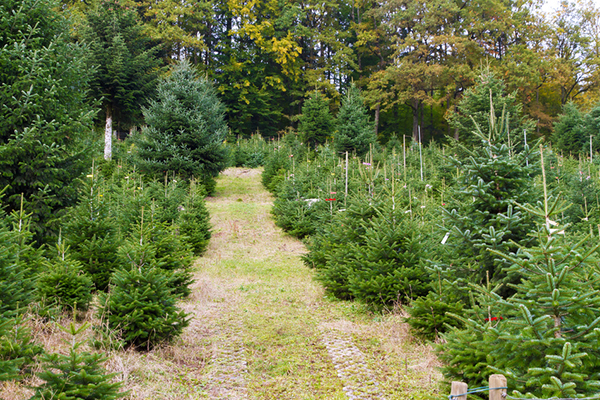Earlier this fall I was walking a woods when I rounded a bend and came upon a field of Christmas trees. I walked up to one, and it was a gem of a tree. It had a deep green color, a nice cone shape with soft needles, and a rich balsam smell. In short, it was the perfect Christmas tree.
Earlier this fall I was walking a woods when I rounded a bend and came upon a field of Christmas trees. I walked up to one, and it was a gem of a tree. It had a deep green color, a nice cone shape with soft needles, and a rich balsam smell. In short, it was the perfect Christmas tree.

I thought, “What does it take to grow a tree like this so that it can someday light up a home celebrating Christmas?”
I decided to ask the owner of these trees, Peter. I met up with him as he hiked his morning walk with his black lab. We’ve known each other for decades, and Peter’s been growing Christmas trees even longer than that. Today, instead of our usual greeting, I asked Peter what went into getting his trees to look so good. He replied in a way that said, “Glad you finally asked!” Here are some of his tips on growing beautiful Christmas trees:
- First you have to get your trees started. A few folks start Christmas trees from seed, but most growers today buy 3 to 5 year old seedlings (which are about a foot tall) from a nursery and then plant them into a prepared field.
- Grass and weeds compete with seedlings and can shade them out. Commercial growers may spray herbicide once a year and mow 2 to 3 times per year to control the weeds.
- Deer like all species of true fir (Balsam, Fraser, Canaan and Concolor Fir). These are also the most popular Christmas trees, so you may need a fence to protect your trees. Deer fence can be expensive, because deer can jump over an 8 foot fence!
- Insects and fungus can infest trees and discolor or damage needles. Christmas tree growers need to scout for these pests and control them.
- Depending on the grower’s soil, trees may need to be fertilized annually. When done correctly, fertilizing trees improves their color, fullness and growth rate.
- Shearing is done once a year after trees have been in the field for 3 to 4 years. Shearing is both an art and a science, and it takes practice to know what to cut. But when you do it right, you’ll get a refreshing smelling, soft, deep green, full, appealing, conical shape that keeps families coming back for another real tree year after year.
- You need patience to farm Christmas trees. In New York, it takes about 10 years to grow a 7-8’ tree.
- The above work, along with harvesting and selling the tree, can mean a total of 1/2 hour to an hour of work per tree over its life.
If you want to learn more about real Christmas trees – including where to get one in your area – check out these websites: https://ctfany.org/ and http://www.realchristmastrees.org.




